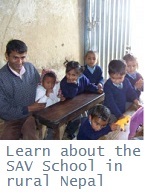Looking for Something?
| Word Tips |
| Excel Tips |
| Outlook Tips |
| PowerPoint Tips |
| Windows Tips |
| Hardware Tips |
| Internet Tips |

Pick a Tip:
| < prev | next > | |||
|---|---|---|---|---|
| 1 | 2 | 3 | 4 | 5 |
| 6 | 7 | 8 | 9 | 10 |
| 11 | 12 | 13 | 14 | 15 |
| 16 | 17 | 18 | 19 | 20 |
| 21 | 22 | 23 | 24 | 25 |
| 26 | 27 | 28 | 29 | 30 |
| 31 | 32 | 33 | 34 | 35 |
| 36 | 37 | 38 | 39 | 40 |
| 41 | 42 | 43 | 44 | 45 |
| 46 | 47 | 48 | 49 | 50 |
| 51 | 52 | 53 | 54 | 55 |
| 56 | 57 | 58 | 59 | 60 |
| 61 | 62 | 63 | 64 | 65 |
| 66 | 67 | 68 | 69 | 70 |
| 71 | 72 | 73 | 74 | 75 |
| 76 | 77 | 78 | 79 | 80 |
| 81 | 82 | 83 | 84 | 85 |
| 86 | 87 | 88 | 89 | 90 |
| 91 | 92 | 93 | 94 | 95 |
| 96 | 97 | 98 | 99 | 100 |
| 101 | 102 | 103 | 104 | 105 |
| 106 | 107 | 108 | 109 | 110 |
| 111 | 112 | 113 | 114 | 115 |
| 116 | 117 | 118 | 119 | 120 |
| 121 | 122 | 123 | 124 | 125 |
| 126 | 127 | 128 | 129 | 130 |
| 131 | 132 | 133 | 134 | 135 |
| 136 | 137 | 138 | 139 | 140 |
| 141 | 142 | 143 | 144 | 145 |
| 146 | 147 | 148 | 149 | 150 |
| 151 | 152 | 153 | 154 | 155 |
| 156 | 157 | 158 | 159 | 160 |
| 161 | 162 | 163 | 164 | 165 |
| 166 | 167 | 168 | 169 | 170 |
| 171 | 172 | 173 | 174 | 175 |
| 176 | 177 | 178 | 179 | 180 |
| Word Tips |
| Excel Tips |
| Outlook Tips |
| PowerPoint Tips |
| Windows Tips |
| Hardware Tips |
| Internet Tips |
Technology Tip Number 61
|
|
|---|---|
Adults have a responsibility to help children learn about, interpret and understand their world. It's a pretty basic concept, but how do we as adults help kids understand their world when we aren't completely aware of the threats and benefits of things like the internet? Today's technology tip is all about helping adults educate themselves about the internet so they can help kids stay safe online. Like any new technology the internet is full of potentially good outcomes but it comes with plenty of potentially negative outcomes. This has always been true of any new technology. Try to remember that the technology itself isn't good or bad, its how we choose to use it that's good or bad. First, some of the good stuff we can get from the internet:
Then some of the bad stuff:
So how do you educate yourself on the bad stuff so you can help kids avoid it? It should be no surprise that there is a whole bunch of websites out there that can help you: OnGuardOnline.gov SafeKids.com Today's featured YouTube video is an oldie but a goodie: |
|
PRACTICE ACTIVITY: Check out one of the links above and see if you can learn at least three of new terms. TO KEEP ON LEARNING: Try searching the internet for more information. Just as the internet changes the nature of the threats posed to children also changes. Cybersafety
|
|
Looking for Something? |


